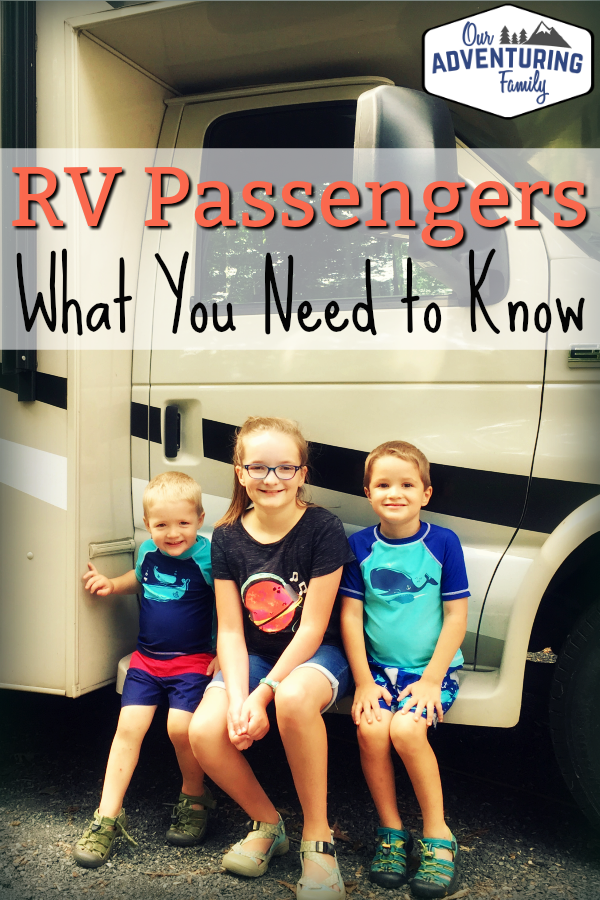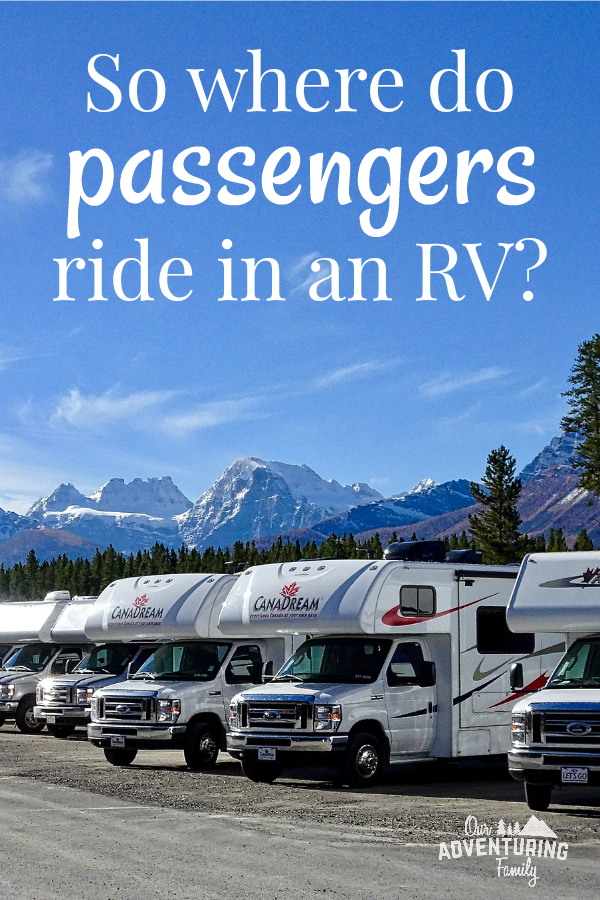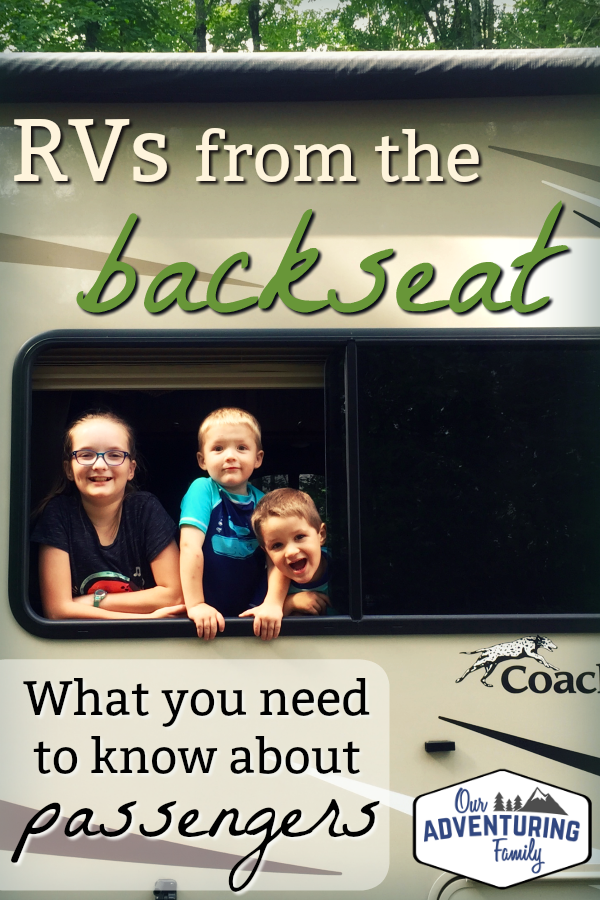This post may contain affiliate links. As an Amazon Associate I earn from qualifying purchases, but there is no additional cost for you. Please see my Disclosure page for more information.

So where do the kids ride in an RV? What about passengers in the back?
This is a controversial topic, so I’ll try to share different view points and things to consider so you can decide what’s right for your family.
When you’re towing a travel trailer with a truck/suv/van/whatever, everyone has to be properly restrained with a seatbelt, car seat, or booster seat in the vehicle doing the towing. Passengers should never ride in a TT, and while legally some states will allow passengers to ride in a 5thwheel, it’s not a great idea. I can’t imagine it would be very comfortable- there’s a lot of sway and buffeting as you travel down the road.
But where do passengers ride in an RV?
Does everyone buckle up, or do passengers sit, stand, or lay down where and when they want? Do you see the couch and think “Oh, that would be so great to stretch out on while driving!” or do you see the bed in the back and think “Oh, it would be so nice to lay Junior down for a nap while we drive through Kansas”? Or do you count the seatbelts available to see if there’s enough for everyone in the family?
Keep reading to learn about some of the things to consider before driving down the road in an RV.
Know your legal responsibilities
And here’s where things get a bit confusing.
Some states have laws requiring all passengers in RVs to be buckled in seatbelts, some just require the driver and front passenger to be belted. This inconsistency can cause legal difficulties and confusion.
Do some research into the local laws for the states you will be traveling through, and know what you need to do legally. Even if you live in another state, you still have to obey the laws of the state you are driving through.
What about safety precautions?
Some people will say you should never ride sideways (as many RV seats are situated), even when a seatbelted or in a car seat.
Some will say you should never travel with the table in place if people are seated around it, as would happen when seated around a dinette.
There are those who believe you should never have passengers in an RV: they should ride in a separate vehicle, instead. There are others who buckle everyone up. And there are those who ignore seatbelts in the cabin completely and sit wherever they want.
Before we go any further into this discussion, I need to add a disclaimer.
There is a LOT of debate about seatbelts, car seats, and RVs. I didn’t realize just how much until I was researching the best way to buckle car seats into an RV last spring before our road trip. (go ahead and google that and you’ll see what I mean) I don’t believe there’s a one-size fits all solution to this issue, but I do think you need to be aware of the issues so you can make an informed decision.
Do some research and decide what risks you are ok taking, and which ones you aren’t (more on those risks in a minute).
How many seatbelts are in your RV?
If you’re in a Class A, B, or C, seat belts will be present in the cabin area. The number available varies widely from model to model and manufacturer to manufacturer.
Some RVs have LATCH points for car seats, some don’t.
Some RVs have seat belts that are securely bolted to the frame, some have seat belts that are bolted just to the floor.
If you haven’t purchased an RV yet and are trying to figure out the seat belt situation, it can be a bit difficult. Floor plans do not always show the available seat belts. You can sometimes see them in walk-through videos made by dealerships, but in general I find that they ignore the seatbelt issue, so it can still be difficult to tell. This is something that is best confirmed in person, as the number can vary even from one year to the next within the same model. If you check the presence of seat belts in person, you can confirm the number present and how they’re attached.
So what should you do?
I’m not here to tell you what to do or give you legal advice (I’m not a lawyer or safety expert, after all), but you should do some research into seat belt laws. You should also research which RVs have the best seat belt attachments and decide what you are comfortable with. While it may be more convenient and comfortable not to worry about seat belts, do you want to ignore them, or are they a priority?
Consider the best-case scenario, but don’t forget the worst-case scenario. What would happen if you were in an accident? Obviously, none of us want to be in an accident, but we can’t control road conditions or other drivers and accidents do occur.
Keep in mind what can happen if you were to brake suddenly or actually be involved in an accident. Would loose items fly around the cabin and hit people? Could unbuckled children (or adults) be tossed around? Would car seats buckled into seatbelts that are just bolted to the floor come loose?
I’m not trying to scare you, but it is advisable to go into this with your eyes open to the potential risks involved. Do some research and decide which risks are acceptable and which are not.
Did you know you can rent an RV or travel trailer to try out before you purchase one of your own? Skip the big corporate rental companies and rent from someone local. Look on RVShare or Outdoorsy to find a rig that will work for you.



Stuff falls EVERYWHERE in our trailer when we’re on the road! You must have to be a lot more careful when you’re packing the RV.